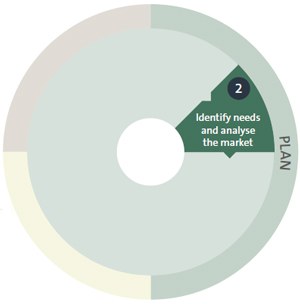Part 4: Identifying needs and analysing the market
 4.1
4.1
The second stage in the procurement life cycle is identifying needs and analysing the market of suppliers that provide goods and services.
4.2
From time to time, we receive complaints that some public organisations do not properly understand the supplier market or the effect they are having on it.
4.3
Procurement decisions should be based on the best information available. Public organisations need to talk to stakeholders to inform the organisation's thinking and understand the supplier market and its role within it. For example, we note a recent initiative to co-design digital services with suppliers.13
4.4
The recent problems in the construction industry are a reminder that supplier markets can be prone to disruption. It is important that public organisations collate and analyse information about the supplier market and assess whether there are risks to their planned procurement that need to be considered when they make decisions.
4.5
It is important that public organisations:
- consult stakeholders at an early stage;
- use the best possible information; and
- understand the supplier market.
Consulting stakeholders at an early stage
4.6
Stakeholders include people who will use the goods and services being procured and the people who form the market, such as suppliers.
4.7
It is important to consult relevant stakeholders at an early stage on a proposed procurement. This is to check that the procurement will meet specific needs and ensure a shared understanding of what is being procured and what stakeholders can expect.
Using the best possible information
4.8
Effective planning relies on good data systems and good data analysis. It is also important to have the right information to base procurement decisions on.
4.9
In 2010, we carried out an audit to examine the effectiveness of the New Zealand Transport Agency (NZTA) in collecting information about the state highway network and using it to plan for maintenance and renewal work.14 We found that the NZTA had good descriptive and condition information about the state highway roads. It had a planning framework that enabled it to use this information for day-to-day maintenance and renewal of the road network, on which it spent about $500 million every year. However, not all of its information was complete, especially for structures such as bridges and tunnels.
Understanding the supplier market
4.10
Public organisations need to consider how their approach to procurement might affect longer-term goals, such as maintaining competitive and efficient supplier markets.
4.11
Public organisations should gain an understanding of the nature of the relevant supplier market and how it works. This allows for informed decisions about how they will approach the market and improve understanding about market risks, such as the risk of market failure.
4.12
We understand that, increasingly, public organisations are carrying out activities to understand the supplier market. There are many ways to do this, including interacting with selected suppliers or using industry briefings before doing detailed procurement planning.
Our proposed audit work
4.13
Because of the size of the NZTA's procurement for the state highway network, we intend to look at how well its delivery model supports a sustainable and competitive market for maintaining and renewing the state highway network.
| We intend to examine how well the New Zealand Transport Agency is working to help ensure a robust contracting market that is capable of delivering a competitive tendering environment when contracts for maintenance and renewal are completed. |
13: "Start of a new era in digital government procurement processes" (9 August 2018) at www.beehive.govt.nz.
14: We published the findings of this audit in our report: New Zealand Transport Agency: Information and planning for maintaining and renewing the state highway network.

